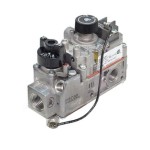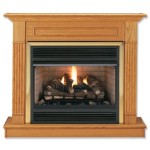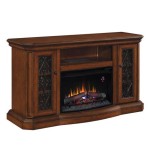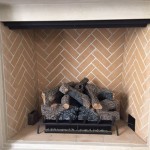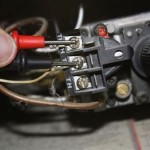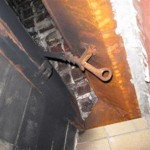What Are Gel Fuel Fireplaces?
Gel fuel fireplaces present a unique alternative to traditional wood-burning or gas fireplaces, offering a blend of aesthetic appeal and relative ease of use. They utilize a specially formulated gel fuel, typically composed of isopropyl alcohol, water, and a thickening agent, to produce a real flame without the need for venting or chimneys. Understanding the components, operation, advantages, and disadvantages of gel fuel fireplaces is crucial for making an informed decision about their suitability for a particular space.
The primary appeal of gel fuel fireplaces lies in their portability and the absence of complicated installation procedures. Units can often be placed directly on a floor, tabletop, or mounted on a wall, making them suitable for apartments, condos, or rooms where installing a conventional fireplace is impractical or impossible. Furthermore, the flame produced is genuine, creating a more realistic ambiance compared to electric fireplaces that simulate a fire using lights and projections.
The fuel itself is typically sold in cans or cartridges that are placed within the fireplace unit. Once ignited, the gel produces a controlled flame that burns for a specified duration, usually ranging from two to three hours per can, depending on the can's size and the fireplace design. The burning process releases heat, although the heat output is generally lower than that of wood-burning or gas fireplaces. The gel fuel's composition also contributes to a relatively clean burn, producing minimal smoke, soot, or ash.
Composition and Functionality of Gel Fuel
The defining characteristic of a gel fuel fireplace is, of course, the fuel itself. Understanding its composition is essential to appreciate its performance and safety considerations. Isopropyl alcohol, also known as rubbing alcohol, is the primary combustible component. This alcohol is highly flammable and provides the primary source of energy for the flame. Water is incorporated to moderate the burning rate, helping to control the flame's intensity and prolong the burn time. The addition of water also helps to reduce the overall flammability of the gel before ignition.
A thickening agent, usually a form of cellulose or a similar polymer, gives the fuel its gel-like consistency. This gel form is crucial for several reasons. Firstly, it prevents the flammable alcohol from simply flowing freely, which would create a dangerous fire hazard. Secondly, it allows the fuel to be easily contained within a can or cartridge, facilitating safe handling and storage. Thirdly, the gel matrix provides a controlled surface area for combustion, leading to a more consistent and predictable flame.
When the gel fuel is ignited, the isopropyl alcohol vaporizes and mixes with oxygen in the air, creating a combustible mixture. The flame then propagates through the gel, consuming the alcohol and releasing heat, light, and carbon dioxide as byproducts. Due to the relatively clean-burning nature of isopropyl alcohol, the amount of smoke, soot, and ash produced is minimal compared to traditional wood-burning fireplaces.
Some gel fuels also incorporate additives to enhance the visual appeal of the flame. These additives can include colorants that produce flames of different hues, such as blue, green, or red. Crackling agents can also be added to simulate the sound of a wood-burning fire. However, the inclusion of these additives can sometimes affect the overall cleanliness of the burn, potentially leading to slightly increased levels of smoke or residue.
Advantages of Gel Fuel Fireplaces
Gel fuel fireplaces offer a multitude of advantages that make them an attractive option for various situations. The absence of venting requirements is perhaps the most significant benefit. Unlike wood-burning or gas fireplaces, gel fuel fireplaces do not require a chimney or flue to exhaust combustion byproducts. This eliminates the need for costly and complex installations, making them suitable for almost any room or location.
The portability and ease of installation are also considerable advantages. Gel fuel fireplaces are typically lightweight and self-contained units that can be easily moved from one room to another. Installation usually involves simply placing the fireplace in the desired location and inserting a can of gel fuel. This makes them ideal for renters, apartment dwellers, or individuals who want the flexibility to move their fireplace as needed.
The realistic flame appearance is another key appeal. While electric fireplaces can simulate a fire, they lack the authenticity of a real flame. Gel fuel fireplaces produce a genuine flame that dances and flickers, creating a cozy and inviting atmosphere. This can be particularly appealing for individuals who value the aesthetic qualities of a traditional fireplace but are unable or unwilling to install one.
The relatively clean-burning nature of gel fuel is also an advantage. Compared to wood-burning fireplaces, gel fuel produces significantly less smoke, soot, and ash. This reduces the need for frequent cleaning and maintenance and minimizes the risk of indoor air pollution. While some carbon dioxide is produced during combustion, the overall environmental impact of gel fuel fireplaces is generally considered to be lower than that of wood-burning fireplaces.
Finally, gel fuel fireplaces can offer a measure of supplemental heat. While they are not typically designed to be primary heating sources, they can provide some warmth to a room, particularly in smaller spaces. This can be a welcome benefit during cooler months, adding to the overall comfort and ambiance of the room.
Disadvantages and Safety Considerations
Despite their advantages, gel fuel fireplaces also have certain limitations and safety considerations that must be taken into account. The heat output is generally lower than that of wood-burning or gas fireplaces. While they can provide some supplemental heat, they are not suitable for heating large spaces or serving as a primary heating source. This can be a disadvantage for individuals who are looking for a fireplace primarily for its heating capabilities.
The cost of gel fuel can also be a factor. While the initial cost of the fireplace unit itself may be relatively low, the ongoing cost of purchasing gel fuel can add up over time. The frequency of fuel replacement depends on the size of the can and the frequency of use. It is essential to factor in these ongoing costs when comparing gel fuel fireplaces to other types of fireplaces.
Safety is a paramount concern when using any type of fireplace, and gel fuel fireplaces are no exception. It is crucial to follow all manufacturer's instructions carefully and to heed all safety warnings. Gel fuel is flammable and should be handled with care. Never refill a can of gel fuel while the flame is still burning or the can is still hot. This can lead to a dangerous flashback or explosion.
The fireplace should always be placed on a stable and non-flammable surface, away from curtains, furniture, and other combustible materials. It is also important to ensure that the area around the fireplace is well-ventilated to prevent the buildup of carbon dioxide. Never leave a burning gel fuel fireplace unattended, and always extinguish the flame completely before leaving the room or going to bed.
Carbon monoxide poisoning is a potential risk with any type of combustion appliance, including gel fuel fireplaces. While the amount of carbon monoxide produced by a gel fuel fireplace is typically low, it is still essential to have a working carbon monoxide detector installed in the room. This will provide an early warning in case of a carbon monoxide leak.
Finally, it is important to purchase gel fuel from a reputable source and to ensure that it is specifically designed for use in gel fuel fireplaces. Using alternative fuels or homemade concoctions can be extremely dangerous and can lead to explosions, fires, or the release of toxic fumes.
In conclusion, gel fuel fireplaces offer a convenient and aesthetically pleasing alternative to traditional fireplaces. Their portability, ease of installation, and realistic flame appearance make them an attractive option for various situations. However, it is essential to be aware of their limitations, including their lower heat output and the ongoing cost of fuel. Above all, safety should be the paramount concern when using a gel fuel fireplace. Follow all manufacturer's instructions carefully, and take all necessary precautions to prevent accidents and ensure a safe and enjoyable experience.

Lloyd Modern Gel Fuel Fireplace Indoor Outdoor Solo Stove

Terraflame 25 5 In X Gel Fuel Fireplace The Ethanol Fireplaces Department At Com

Gel Fireplace Logs Can Transform An Unused Future Expat

Gel Fuel Ventless Fireplaces In New York City Hearthcabinet

Portable Indoor Outdoor Gel Fuel Fireplace In Black Holly And Martin

Terraflame 25 5 In X Gel Fuel Fireplace The Ethanol Fireplaces Department At Com

Gel Fuel Fire Log Insert Bring Your Fireplace To Life Solo Stove

Uniflame Gel Fuel Premium Fireplace 13oz Cans 12 Pack

Fireplaces Gel Fuel Real Flame Silverton Fireplace In White G8600 W

How To Make Gel Fuel For Your Ventless Fireplace A Diy Guide
Related Posts

